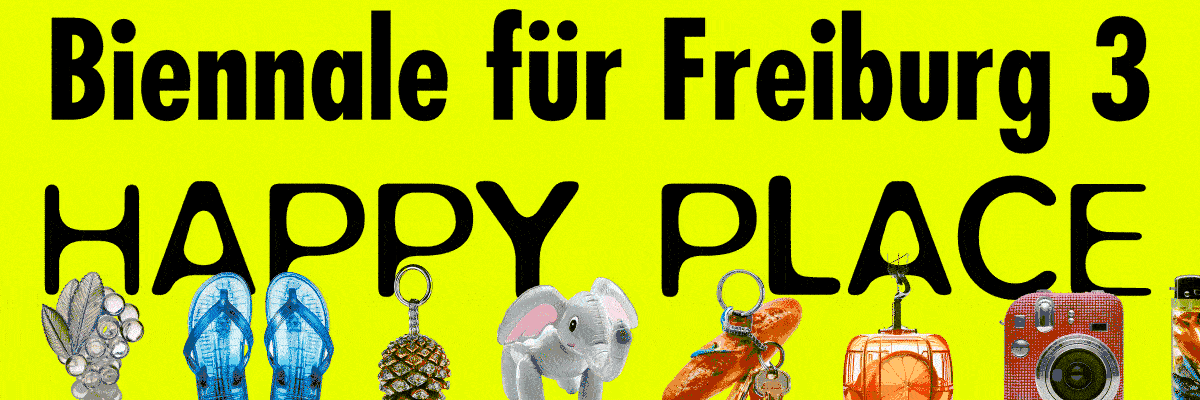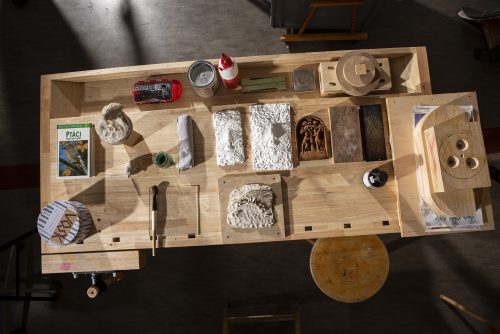
Yeni Mao
An array of disruptions and codependencies

An array of disruptions and codependencies, installation view
Advertisement

An array of disruptions and codependencies, installation view

Yeni Mao, fig 39.7 strikebreaker, 2023 Bronze, nickel-plated steel 101 x 49 x 66 cm, Unique

Yeni Mao, fig 39.6 slur, 2023 Bronze, nickel-plated steel 168 x 25 x 15 cm, Unique

Yeni Mao, fig 39.1 coil, 2023 Nickel-plated steel, leather, hardware 145 x 46 x 43 cm, Unique

An array of disruptions and codependencies, installation view

An array of disruptions and codependencies, installation view
An array of disruptions and codependencies presents a fleet of sculptures that access social and transcendental states through the interplay of suggestive human, animal and industrial forms. Throughout the gallery, lustrous steel and leather armatures support organ-like artefacts made of bronze, ceramic, volcanic rock and mercury glass. These cyborgian assemblages are installed in the space as if technological fragments extruded from the architectural envelope. As we navigate the installation, encountering this network of objects, our own codependencies and reliance on technological and societal structures are challenged. The works in An array of disruptions and codependencies act as machines of desire, an interdependent network rendering the actual object of desire obsolete, preoccupied by the passage rather than the end goal.
Yeni Mao’s practice engages in issues of fragmentation through a series of assemblages and architectonic arrangements developed over several decades in the United States and Mexico. He evokes and examines a sense of otherness with the concurrent sensations of restraint, domination and order. His works are coded with references to subcultures, countercultures and outsiders: enforced or self imposed on account of their social, racial, sexual, or transnational status. Mao sees deviance as the basis for his multivalent practice, positing that identity is not intrinsic but a rupture, an anti- identity led by our ungoverned, base instincts.
This new body of work utilises somatic strategies of ambiguity and cognition. The sculptures operate by an inherent visceral understanding: recognitions are spurred by the agency of the materials and objects, the viewer, and the artist. Three of the sculptures incorporate bronze castings of cow tongues. There is an emotional path embedded in these works - an initial response of curiosity, followed by abjection and perhaps even repulsion. The abjection emerges from the realisation that these tongues, cut from the bovine body, are the same as our tongues. They are our animal nature. Following the path of this transference, the disembodied cow could be emblematic of any body, a mythological beast, a lion, a dragon. Mao is interested in these possibilities as a mechanism for consciousness.
Yeni Mao’s own peripatetic journey spans continents and cultures, drawing influence from outsider experience, a life in opposition. His enquiries and modes of expression are informed by an intersection of influences - architectural modernism, the industrial music and body modification movement, his Chinese heritage, his queerness. This array of interactive defining mechanisms highlights the composite nature of diasporic visual language and the ephemeral nature of our own ontologies.
Yeni Mao (b. 1971 Canada) is a Chinese-American sculptor based in Mexico City. He received a BFA from The School of Art Institute of Chicago, and subsequently trained in foundry work in California, and the architectural industries of New York. Mao is an under-recognised forebear of the current movement and recognition of Asian diasporic artists in the contemporary field.
Yeni Mao’s work has been featured in numerous international exhibitions. Most recently, Mao presented the solo exhibitions vol. 3: chimera with guadalajara90210 in Guadalajara, Yerba Mala at Campeche in Mexico City, I desire the strength of nine tigers at Fierman Gallery in New York, and a public sculpture with Brooke Benington in Canary Wharf, London. Among the many group exhibitions he has participated in are La Casa Erosionada at Museo Anahuacalli in Mexico City, Otrxs Mundxs at Museo Tamayo in Mexico City, The Disorganized Body at Zeller van Almsick in Vienna and The Hearing Trumpet at Galerie Marguo in Paris; and The IX Bienal De Artes Visuales Nicaraguenses in Nicaragua. Mao is a recipient of the Pollock-Krasner Foundation Grant 2021. Mao’s work has been written about in Art in America, The New York Times, Time Out New York, The Advocate, and The Village Voice.




